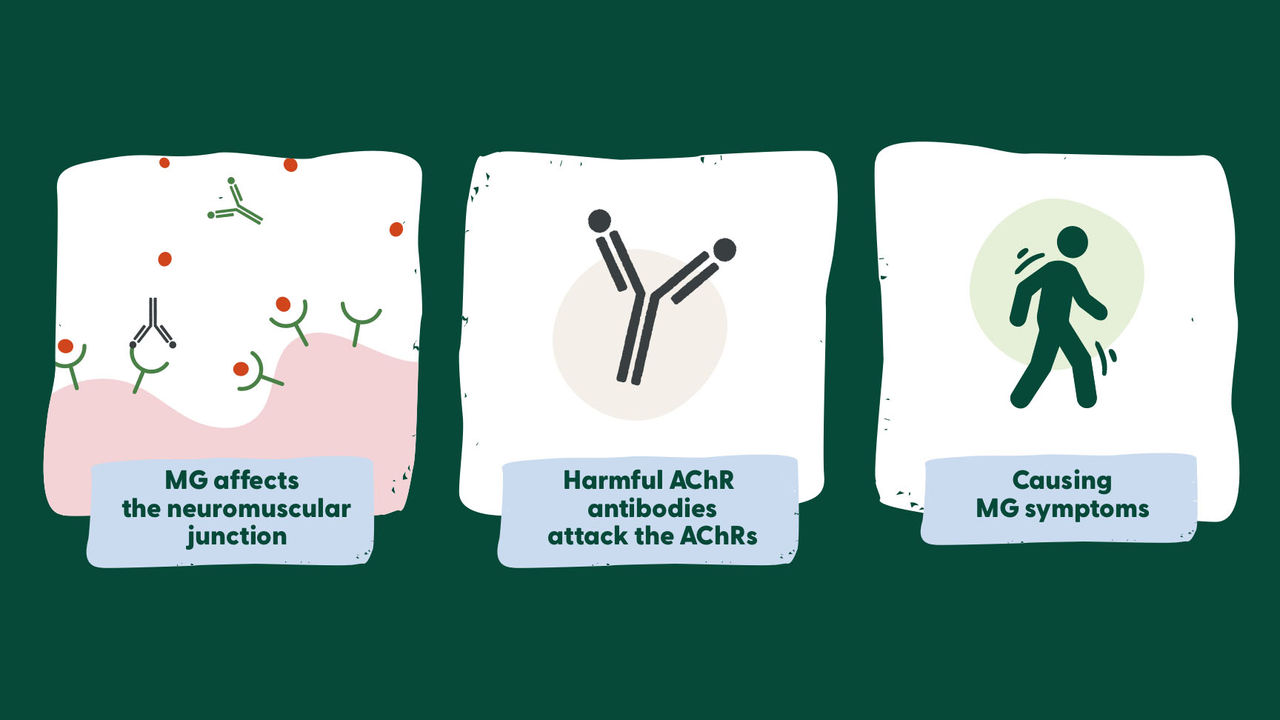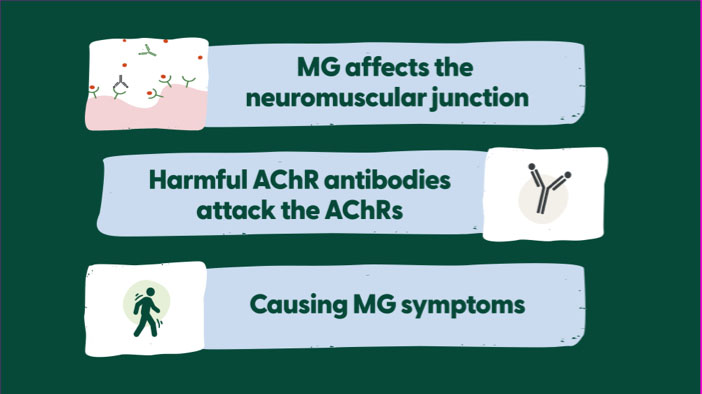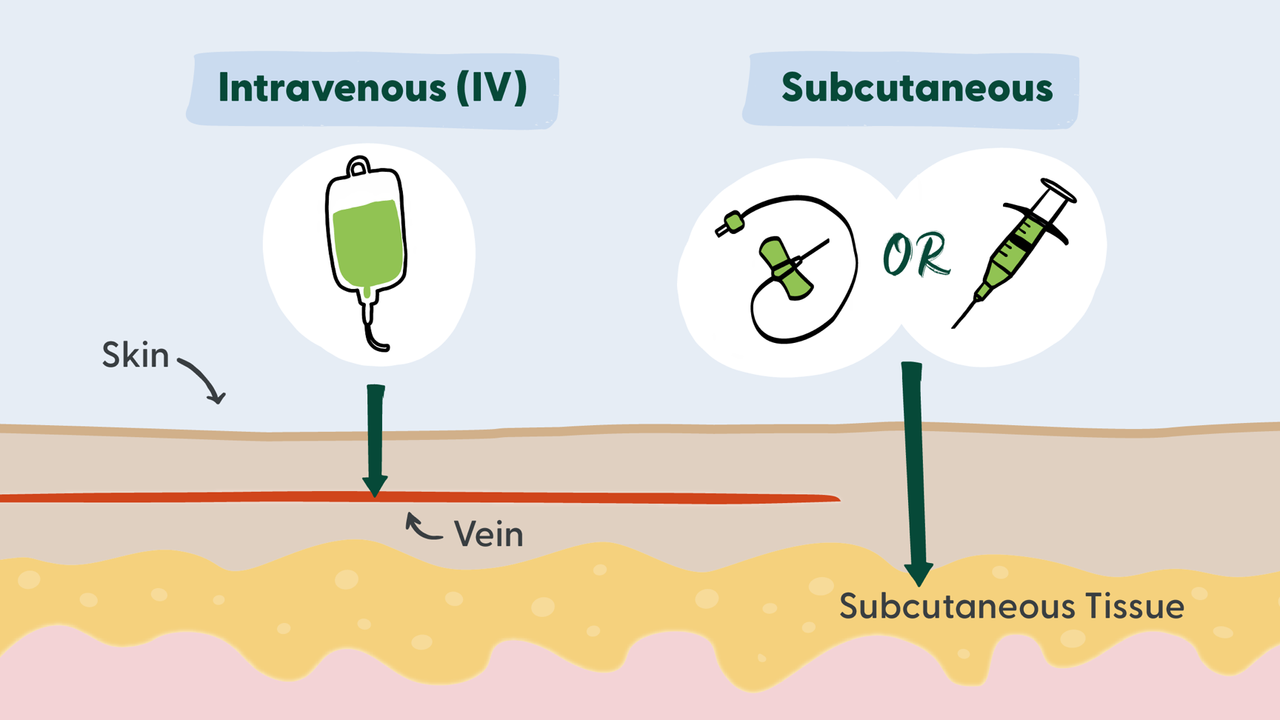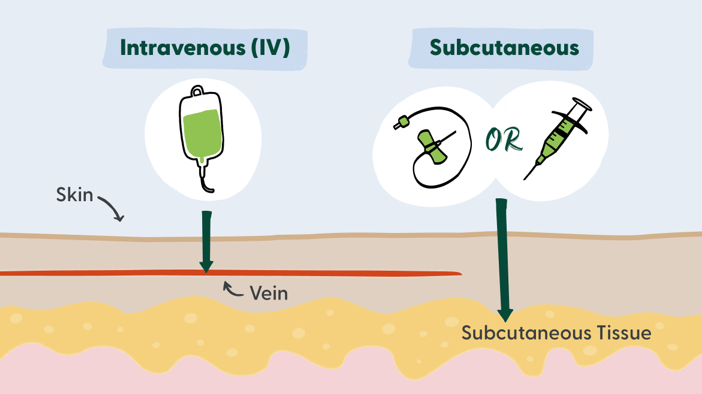Learn about biologic treatment and how this may fit into your treatment plan.
Wherever you are on your myasthenia gravis (MG) journey, staying in the loop on treatment options can be beneficial. The MG treatment landscape continues to evolve and provide opportunities to explore other treatment options. Those options run the gamut—from steroids, an oral medication used to help reduce the immune system response and lead to fewer harmful antibodies that can cause MG symptoms, to bloodstream therapies, which place healthy antibodies into the blood to help treat MG.
Another treatment type that is part of the MG treatment landscape is biologic therapy. Biologic therapy has been used for decades to treat other conditions, and there are two subtypes that are approved for various types of generalized MG (gMG). Biologics are created from living things or products of living things, such as humans, animals and microorganisms (e.g., bacteria, fungi).
Whether you’re completely unfamiliar with biologics or want to learn more about them, this article aims to help you understand what they are, how they work and how they’re administered, so you can discuss with your doctor whether biologics could be right for you.
A recap on MG’s role in the body
To understand how biologics work in the body, it helps to first get a refresher on how MG impacts the body. While all biologics may not treat the same type of gMG, this article will focus on anti-AChR antibody positive gMG, as that’s the most common.
Let’s start with the neuromuscular junction, which is an area between the nerve and muscle, and it’s the part of the body where the brain tells the muscles to move. These messages are delivered by acetylcholine (ACh) messengers and received by acetylcholine receptors (ACh receptors). When ACh messengers bind to ACh receptors, it activates the muscle and causes a muscle contraction. Separately, the immune system produces antibodies that help protect the body from infection and disease, and the most common antibody is immunoglobulin G (IgG). For those living with MG, the immune system mistakenly makes IgG antibodies that interfere with ACh receptors, known as harmful ACh receptor antibodies, blocking the communication between muscles and nerves, causing MG symptoms.
In addition to attacking ACh receptors, harmful IgG antibodies can affect the complement cascade, which is part of our immune system response to help remove pathogens. With MG, harmful IgG antibodies can activate the complement cascade, causing damage to the muscle cells, including ACh receptors, and leading to MG symptoms in an additional way.
Mechanisms of action (MOA): How biologics work
When it comes to biologic treatments for gMG specifically, there are two components of the immune system they can target:
FcRn inhibitors: This subtype of biologic treatment attaches to and blocks some neonatal Fc receptors, called FcRn. FcRn extends the time IgG antibodies are in the body by binding to them. When FcRn inhibitors attach to and block some FcRn, they cause a reduction in IgG antibodies, including the harmful IgG antibodies that can disrupt normal communication between nerves and muscles and trigger the complement cascade.
C5 complement inhibitors: This subtype of biologic treatment attaches to and blocks C5, a protein within the complement cascade that contributes to damage of muscle cells.
While each of these biologic subtypes has an effect on a different component of the immune system, they both offer a targeted approach, which can help treat MG by targeting specific components in the immune system to help address the symptoms.
Treatment isn’t one-size-fits-all. If something isn’t working, partner with your physician to find what works for you.
Routes of administration (ROA): How biologics are given
In terms of how you can receive biologic treatment, it’s generally administered in one of two ways: intravenous (IV) infusions where the medicine goes into a vein, or subcutaneously where the medicine is delivered into the layer beneath the skin through either infusion or injection. Depending on the specific biologic treatment and ROA available to you, there may be some flexibility in where you can receive the treatment. While IV infusions are generally done in an infusion center and injections are typically done in a doctor’s office, both may have the capability to be done in your own home as well, especially if you choose the injection route and a self-injection option is available to you. Check with your doctor and insurance provider to see what options are available to you.
Discussing biologics with your doctor
If you’re interested in exploring a change or an add-on to your current treatment plan, ask your healthcare team about biologics. Dr. Nagar encourages people living with MG to be proactive in seeking information around their treatment plan. “What types of treatments are there? How do I find out what treatment option is right for me?” she shared as examples of what to ask doctors. She also emphasized that if one biologic treatment doesn’t work for someone, that doesn’t mean a different biologic treatment couldn’t work for them instead, so don’t hesitate to ask your doctor whether you should give it more time, try a different biologic therapy or try a different type of treatment.
Finally, remember to advocate for yourself with your personal goals in mind as you assess the next steps in your MG journey. “I think patients should always initiate the conversation with their doctors about what’s new at every visit, because that’s how quickly the landscape of MG is changing,” Dr. Nagar noted. “Treatment isn’t one-size-fits-all. If something isn’t working, partner with your physician to find what works for you.”















